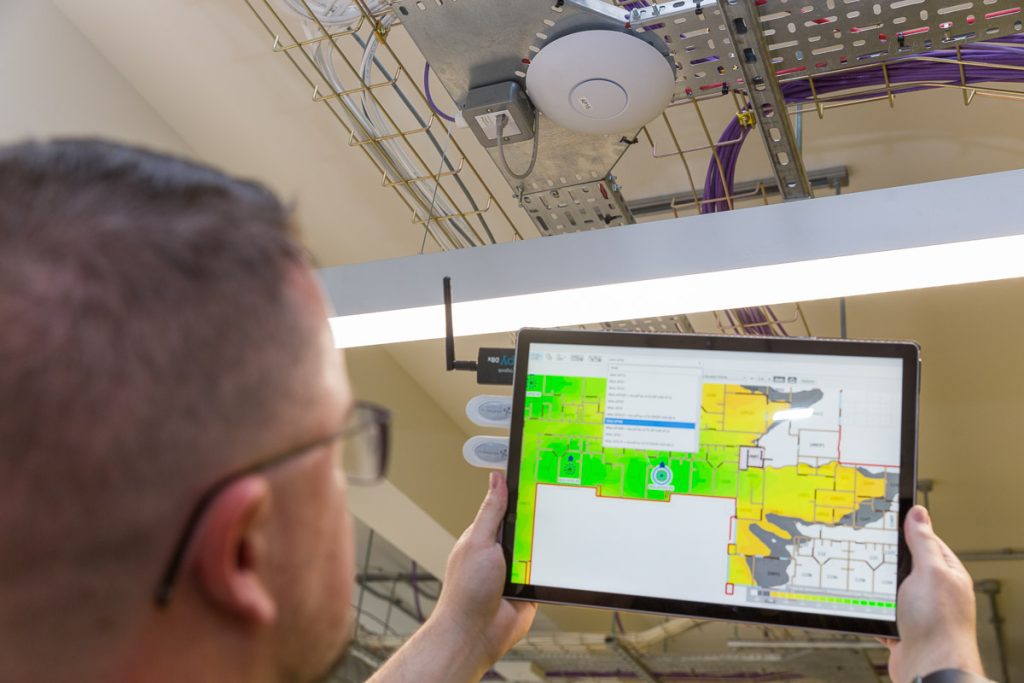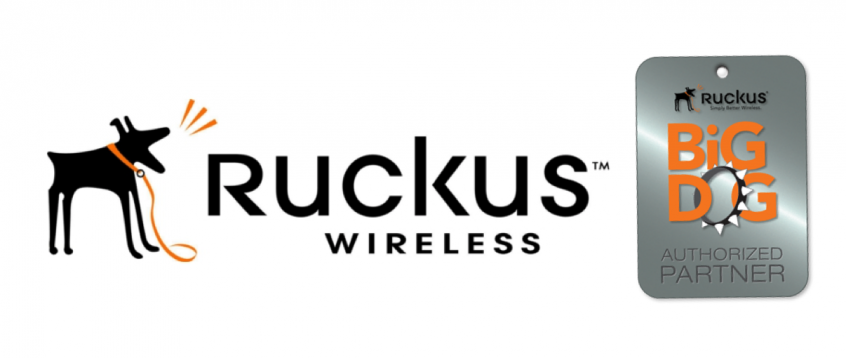Power meets Simplicity
In the world of wireless networking, power and simplicity are like oil and water.
They’ve just never mixed — until now.
WLAN systems from Ruckus Wireless brings power and simplicity together for large-scale indoor deployments — along with all the requisite capabilities demanded:
- Best-in-class performance
- Robust WLAN management
- Seamless interoperability
- Advanced Wi-Fi security
- Massive scalability

Stratum Now provide accessible, local expertise to support our wireless network.
Jaz Johal
Tencate Grass GroupRuckus BeamFlex Adaptive Antenna Technology takes a more adaptable approach. BeamFlex technology enables the antenna system within a Ruckus AP to continually sense and optimize for its environment. This antenna system mitigates radio interference, noise and network performance issues, and improves application flows.
The ChannelFly dynamic channel management technology in Ruckus APs improves wireless performance by dynamically switching a client to a better channel when the one it’s using starts to degrade.
Why you should care:
Most modern WLAN products can change a client’s channel when the one it’s using gets clogged with interference or too many devices. But there’s no point in switching channels unless you know the new one will actually provide more capacity. And most channel management strategies don’t do a great job of predicting. ChannelFly technology assesses all available channels to measure the real-world capacity improvement each one can provide before it directs the AP to switch channels.
ChannelFly technology was originally developed for use in carrier Wi-Fi environments, where channels are highly congested. Even in these dense public settings, it delivers multi-fold improvements in AP and network capacity—within seconds, automatically.
You’re not crazy if you think that wireless networks should be… wireless. But in traditional WLANs, you still have to run cables to each AP. In mesh networks, individual APs connect with each other wirelessly.
Why you should care:
Who wouldn’t want to eliminate the need for expensive Ethernet cabling across their facilities? But making mesh networks work in enterprises is easier said than done. Traditionally, it’s required a lot of complex configuration, and it’s been hard to assure consistent, reliable connectivity.
With Ruckus SmartMesh Networking technology, we’ve made mesh networks enterprise-grade. Instead of navigating complex configurations for each AP, just check a box. The mesh forms automatically. And with our BeamFlex technology, APs can dynamically change antenna patterns on a packet-by-packet basis to adapt to conditions and ensure a solid connection. Enterprises get self-forming, self-healing mesh networks at half the time and cost of traditional wireless deployments.
Dynamic Pre-Shared Key (DPSK) is a Ruckus-patented technology that delivers secure network access by providing each device and user with a unique login credential. Users access the wireless network using their own personal key, which is provided as part of the network onboarding process. In contrast, with conventional pre-shared keys (PSKs), multiple, or even all, users share the same key.
Why you should care:
Traditional pre-shared keys create a security hole in network defenses because multiple users access the network with the same key. Conventional PSKs do not give IT teams visibility and control over devices on the network or the ability to map access policies to specific users and devices. Users readily share conventional PSKs with others, and IT cannot revoke them for one user without revoking access for all. DPSKs address the security flaws of conventional PSKs to make users, devices, data and the network more secure.
DPSKs are an alternative to digital certificates that provide similar security benefits. They are appropriate in cases where user experience considerations make it impractical to install a digital certificate on the device. This applies in cases where the user will only need network access for a limited time—for example, in the case of guest users.
802.11 is a family of wireless standards created by the Institute of Electrical and Electronics Engineers (IEEE). 802.11n is the older version of Wi-Fi, launched in 2009. It improved over previous versions of Wi-Fi with multiple radios, advanced transmit and receive techniques, and the option to use 5 GHz spectrum—all of which translate to a data rate of up to 600 Mbps.
802.11ac, introduced in 2014, is the latest generation. It adds wider channels and the ability to utilize up to eight data streams (“spatial streams”) with downlink using multi-user multiple input, multiple output (MU-MIMO) techniques for simultaneous transmission on up to four devices. These are changes over the previous standard that yield a maximum data rate of more than 3 Gbps, and even higher in the future. It also operates exclusively in the cleaner, capacity-rich 5 GHz frequency band.
Why you should care:
Older 802.11n technology is now widely deployed, and still does a good job for many applications. But if you’re deploying wireless infrastructure today, especially in a new, “green field” deployment, 802.11ac is the way to go. You might have heard some grumbling about real-world 802.11ac throughput gains not living up to expectations. And that was sometimes true for early products. But the second generation of 802.11ac—known as “Wave 2”—delivers major advantages over 802.11n, with room to grow. To get the most from 802.11ac, however, you need solutions built with solid wireless fundamentals, thoughtful radio design and very good antennas.
Smart, compact adaptive antenna systems containing multiple elements that electrically manipulate antenna properties so as to create optimal antenna patterns for each device with which they communicate.
Why you should care:
Traditional wireless antennas are either “omnidirectional” (radiating signals in all directions) or “directional” (radiating signals in one direction). Ruckus BeamFlex Adaptive Antenna Technology takes a more adaptable approach. BeamFlex technology enables the antenna system within a Ruckus AP to continually sense and optimize for its environment.
This antenna system mitigates radio interference, noise and network performance issues, and improves application flows. The results:
- Increased performance and range
- Crystal clear video and voice communications
- Maximized power efficiency
BeamFlex+ is an enhancement to Ruckus BeamFlex adaptive antenna technology by providing adaptive support to mobile devices. BeamFlex+ enables antennas to adapt to client device orientation in addition to client device location.
Simple to use, simple to manage Centralized management, quick setup, IT-Lite and automatic, real-time optimization of entire WLAN. 802.11ac ready ZoneDirector 1200 is 802.11ac ready as well as backwards compatible with all existing Ruckus ZoneFlex access points. IT Lite deployment in 5 minutes or less
Professional Services
From Stratum Now

Stratum Now use experienced Ruckus-certified wireless engineers to support, design and install your Ruckus wireless network.
Surveying
Support
Installation
Solutions that put you ahead of the pack
When connectivity really matters, organizations turn to Ruckus. We offer indoor and outdoor wireless access points to fit just about any budget, performance requirement or deployment scenario. Whether you’re challenged with high client density, Wi-Fi-unfriendly building materials or just rising employee or customer expectations, our access points provide secure, reliable access no matter how tough the environment. Every Ruckus AP, from the humblest to the boldest, is packed with patented technologies that go beyond the everyday to ensure superior connections and awesome user experiences.
Why choose Stratum Now?
Stratum Now use qualified and experienced engineers provide support for your Ruckus Wireless network in Birmingham, West Midlands, and beyond.
Our multi-disciplined engineers are trained across a variety of network disciplines and can work on Meraki, OpenMesh, ZyXel, DrayTek, HP, Aruba and many more brands of network technologies, which means we are best-placed to design as well as diagnose your ideal network.


